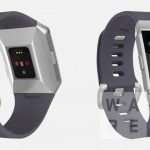How connected devices are revolutionizing mobile field services
How connected devices are revolutionizing mobile field services

While the impressive growth of the Internet of Things (IoT) is often measured in revenue for the devices that enable it, the “soft revenue” potential is even more impressive. Connected devices, supported by analytics and software, are boosting efficiencies in business, shortening sales cycles, improving customer satisfaction, and eliminating the need to pay human workers overtime. Today, companies that employ field service workers walk a fine line between meeting the needs of customers and keeping revenues healthy and expenses down. There are many ways that connected devices networked to follow an IoT business model can help companies simultaneously improve their customer care while adding to their revenue generation.
Earning customer goodwill proactively
Today, most customer support is still reactive: a service fails or an error is made and the customer must reach out to a supplier to correct the problem. Making these calls and wandering through an inbound customer service maze does little to improve customers’ attitudes toward a product or service. (“We value your business. Press 8 to have your call disconnected so you have to start all over again. Or, visit our Web site to see that our FAQ list was last updated in 2009.”) See also: How edge computing and IIoT are changing the way we think about data Companies that embrace connected devices are better prepared to reach out to customers proactively before service issues arrive, helping customers before they even know they need help. This fosters an invaluable sense of customer goodwill that extends the customer lifecycle and revenue generating value of the relationship. It also can save companies from making unnecessary field service calls.
Collaborating with crowdsourcing
Collaboration, or the ability of remote stakeholders (whether human or not) to contribute knowledge to the same problem-solving pool, is revolutionizing the business world–and much of it is due to IoT technology. It’s also helping mobile field service technicians cultivate and save their knowledge to create best practices, consult with one another in real-time on appointments, and gain greater support from managers and supervisors. Nashua, New Hampshire-based Nrby produces location-based workforce collaboration solutions that transform mobile field service into a more proactive, profitable operation. Nrby’s one-touch SmartPins feature maps events and conveys context-rich details so technicians can easily identify, instantly share and quickly resolve issues, while operation centers are continually updated and supervisors receive real-time status changes. Kurt Dobbins, President of Nrby, says it’s like Waze-style crowdsourcing for field service. “With crowdsourcing, the human element is equally, if not more, critical than Internet of Things sensors and machine automation,” he said. “Technicians are much happier and better at their jobs, customers get the reliable service they deserve, and businesses profit from highly engaged, extremely efficient and revenue-generating field service organizations.”
Turning service calls into revenue faster
In a typical service call, a field service worker is dispatched with a manually prepared and static schedule at the beginning of the day. After the call, he promises to be in touch in the future. He brings his notes back to headquarters, and someone else transforms them into a work order (hopefully without transcription errors), which is then returned to the customer. If the customer signs it, the technician is sent back to perform the work. Once again, he brings his notes back so someone else can create an invoice (also hopefully without errors). See also: With hundreds of choices, how do you pick an IoT platform? Connected devices, backed up by a digital field service management solution, can change the workflow of the process entirely, accelerating it while simultaneously reducing errors. Fremont, California-based Apptivo shows the way forward with its CRM suite that includes an integrated field service management solution. Technicians use their smartphones and tablets to check schedules from the road. On site, they can generate work orders instantly, and have customer approve them right on the mobile device. Work can be carried out on the same day, and at the end of the call, the work order can be easily converted into an invoice. A process that once took days is accomplished in hours. Apptivo’s tighter integration with field service functions means that the connected devices of field service workers are connected in real-time with management and a company’s CRM, radically transforming workflow and making it truly more collaborative. “When a collaborative field service solution is integrated with CRM and project management software, service personnel have all the connected tools they need to do the project from end-to-end,” notes to Apptivo CEO Bastin Gerald. “Because the field employee is working on a connected device, nothing happens without manager approval or formal workflow rules, so companies can be sure workers aren’t making promises they can’t keep.”
Preventing failures before they occur
Equipment failures are costly, not just for customers but for manufacturers and those responsible for installing and provisioning equipment. Today, networked sensors can monitor machinery in real-time, allowing operators or equipment manufacturers to have an up-to-date and centralized view of machine assets and operations. This condition monitoring allows them to know which machines are at higher risk to fail and schedule maintenance accordingly, saving money and ensuring the best technician is dispatched for the job. As IoT technology expands, sensors are getting cheaper and easier to deploy, but since they can generate mountains of data, they require backup from predictive analytics and a robust mobile field service solution that can use the data generated in a coherent manner, Michael Fry, a director with CIMdata, told Advanced Manufacturing. “We can call it Industrial Internet of Things or Industry 4.0, or something else,” he said. “The point is that there is a structure to this emerging system, where at the bottom of the stack are sensors, feeding data for something like predictive analytics and other enterprise applications at the top of the stack.”
Giving technicians an AR edge
It would be ideal if every technician in the field could have every machine or system memorized, but it’s not a practical reality for mobile field service. This is where augmented reality (AR) linked by IoT can improve the process. While virtual reality entirely replaces a user’s visual field, augmented reality overlays digital information over real surroundings. In field service, it can be a video of a machine under normal operation or a step-by-step demonstration of how to replace a part or make setting adjustments. General Electric (GE) uses Upskill’s Skylight industrial AR solution in conjunction with Google’s Glass Enterprise Edition to feed information to GE Aviation production workers to prevent common mistakes. For example, mechanics are provided with visual guidance for the correct tightening of B-nuts, which connect fluid lines and hoses to create a reliable seal. Incorrect tightening often results in expensive malfunctions in operation. “We believe that Skylight with Glass has the potential to be a real game changer in terms of its ability to minimize errors, improve product quality, and increase mechanic efficiency,” Ted Robertson, manager of GE Aviation, told Internet of Business. The promise of IoT technology for field service operations is significant, and many companies are already seeing improvements in operations and revenue thanks to connected devices and systems. Networks, sensors, mobile field service solutions and wearable technology will continue to optimize, automate and create opportunities for companies that rely on mobile field service. Connected devices are set to radically transform how field service is conducted. Co-authored by Peter Scott is a journalist and editor who has been covering business, technology and lifestyle trends for more than 20 years. You can contact him at PeterEditorial@gmail.com. JT Ripton is a freelance business and technology writer out of Tampa. He loves to write to inform, educate and provoke minds. Follow him on twitter @JTRipton
The post How connected devices are revolutionizing mobile field services appeared first on ReadWrite.
(37)







